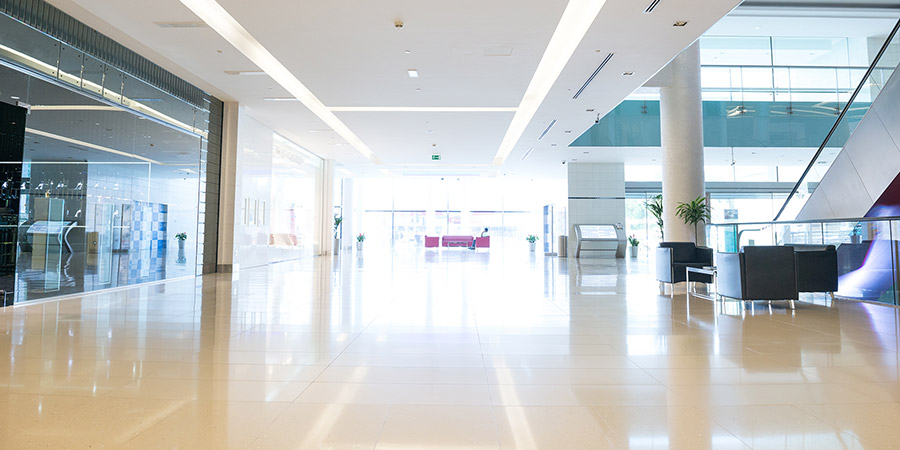
In today’s retail environments, floors aren’t just a surface to walk on…they play a key role in helping create a positive customer experience. In fact, choosing the right floor is just as important as choosing the right lighting or merchandising design. Here are some best practices to keep in mind when selecting flooring for retail establishments.
Keep it “on brand”
Flooring material should reflect and support the store’s brand identity. For example, if you’re choosing flooring for a natural food store, you may want to consider flooring that has the appearance of a natural material. For a high-fashion boutique, something more sleek and sophisticated may be the right choice.
Durability matters
Retail floors must stand up to continuous traffic—and look good doing it. Selecting a material specifically designed for high-traffic applications is essential. Fortunately, there are a wide range of flooring products made from durable materials in a range of styles. Check with the manufacturer regarding a product’s wear rating to ensure it is suitable for the level of traffic anticipated, such as Class 4 for light commercial applications or Class 5 for commercial applications with heavy, continuous use.
Consider maintenance
Retail customers walking in off the street track in all manner of dirt, sand and debris. Selecting a flooring product that is easy to clean and maintain is critical. Choosing a color or pattern that hides dirt is also a good idea—a bright white floor looks beautiful when clean, but will quickly lose that luster when it gets dirty. And make sure you understand the maintenance requirements of the material. Without proper maintenance, dirt and grit, stains and other retail realities can significantly degrade the floor’s appearance over time.
Think safety
Some flooring materials can be extremely slippery when wet. Flooring with prominent seams or transitions from smooth materials such as tile to “grippy” materials such as carpet can cause a patron to trip. Think carefully about potential hazards when considering different flooring products or combinations.
Beware of moisture
When installing flooring on a concrete slab, make sure to test the slab for moisture (RH) and alkalinity (pH) first. If left unmitigated, high moisture levels can damage flooring and lead to mold growth—a serious health hazard. High alkalinity can break down flooring adhesives and attack some flooring materials. Investing in effective moisture mitigation, such as an easily installed KOVARA floor moisture barrier between the slab and the flooring, is a wise investment that can help avoid an extremely costly floor repair or replacement.
Unique alternative
Looking for a unique alternative – consider using extended joint concrete systems when designing your slab to create a strong, flat and robust flooring solution that can differentiate the look and feel of your space, while providing enhanced durability and functionality.
Contact a flooring specialist
Related articles
October 02, 2017
Prescription for healthcare facility flooring: Best practices
Floors play a critical, yet often overlooked, role in the daily activity of today’s busy healthcare organizations. To help ensure your flooring decisions support the mission of patient care, consider ...
READ MOREOctober 23, 2017
Why you should have the moisture mitigation conversation up front
Moisture problems in concrete slabs and floors are nothing new. Virtually anyone who has been in the commercial construction industry for any length of time has run into them. Indeed, achieving a leve...
READ MORETags
- Flooring
- KOVARA
- Retail buildings
- VERSASHIELD